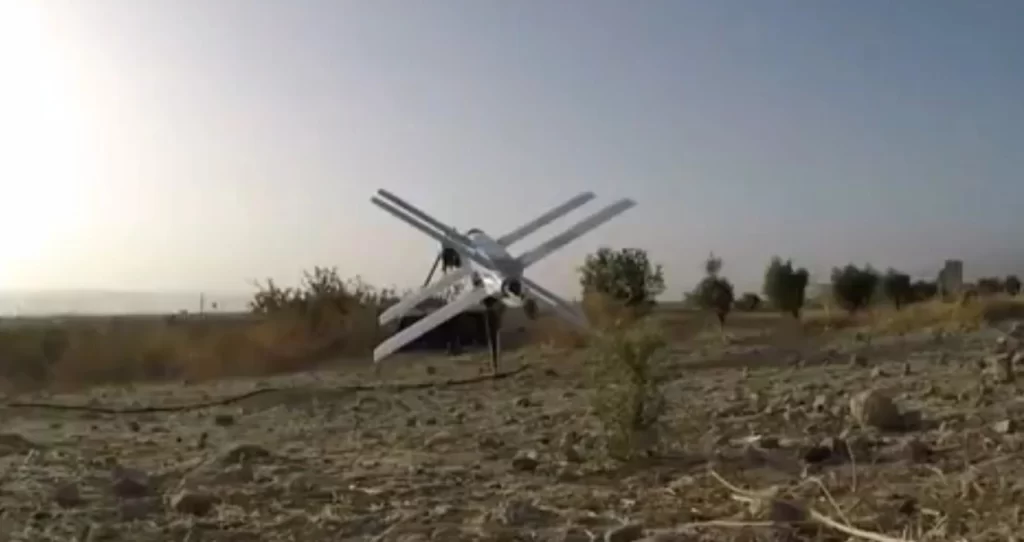The use of drones by Russia as a form of counterbattery fire is causing Ukraine’s shoot-and-evade approach to be altered. After firing, artillery units typically have between 130 and 150 seconds to scoot. When this occurs, a Russian command, control, communications, computers, and intelligence system (C4I) automatically assigns targets to the associated Lancet-3 loitering munition launcher closest to it.
The Lancet drone has a camera, and a visually guided drone can locate even fast-scooting artillery. This tactic has cost Ukraine many self-propelled guns in the last few days. The Russian UAV ZALA is also used for hunting and designating targets.
The Lancet drones are produced in vast quantities and cost between $20,000 and $40,000. Ukraine possesses some self-propelled cannons mounted on vehicles which can scoot faster, but to counter this type of drone, it generally requires equipment that is both quick and equipped with intelligent radar. Ukrainian artillery does not have either of these characteristics. The drone pilot can execute manoeuvres while the UAV is in flight, making the situation even more difficult for the Ukranian artillery.
What is unique about Russian kamikaze drones “Lancet-3”?
Lancets are loitering munitions. They can either wait for the operator to locate the target or return to its operator. In either instance, this ensures that ammunition is only utilised during the assault of a specific target.
The “Lancet-3” can be deployed up to 50 kilometres in the rear of enemy formations before being activated. It comes equipped with an optoelectronic device that the operator can use to locate the target and accurately direct the ammunition towards it.
In horizontal flight, the Lancet-3 can achieve a maximum speed of 110 kilometres per hour, while when pursuing a target, it can reach speeds of up to 300 kilometres per hour. The unmanned aerial vehicle weighs approximately 12 kilograms, and the payload consists of up to 5 kilograms of high-explosive fragmentation. It has a flight duration of approximately one hour.

These loitering munitions are designed and manufactured by the Izhevsk-based company ZALA AERO, a member of the Kalashnikov group of businesses.
At the moment, there are two distinct models of the strike drone that belong to the Lancet family of strike drones. The “Lancet-1” and the “Lancet-3” have identical airframes and interior components in the same configuration. The primary difference between the two variants is their size, which plays a role in their respective fighting capabilities and flight performance.
This is a family of scalable devices; therefore, a more powerful Lancet drone may be developed using the same design scheme. A double X-shaped plumage aerodynamic design is used to construct the “Lancet-1” and “Lancet-3” versions.
The Lancet’s X-shaped design, similar to that of high-precision missiles, enables it to have efficient manoeuvrability and strike moving targets.
Poor visibility is one of the most important factors for air defence systems. Small-calibre, polymer-composites-made ammunition of the Lancet type has a substantially lower probability of being detected by radar. The enemy’s radars require assistance to detect these drones.
The fact that the price of these types of drones is, in almost all cases, considerably less than that of conventional weapons is a significant advantage. The cost of launching a stationary drone will almost always be less than that of launching a high-precision projectile.
Ukrainian Defence against Lancet-3
Ukraine’s primary defences against Lancets and other drones are the Gepard self-propelled anti-aircraft gun and the improved 9K35 Strela-10M4. Ukraine had approximately 150 9K35 Strela-10s, but only fifty per cent were converted to M4s. The 33 Gepards provide infantry support and defence against this type of drone.
Strella-10 missiles are economical, costing between $100,000 and $200,000, and it is the only Anti-Missile System with an acceptable cost-benefit ratio capable of engaging drones in Ukraine. All others are either expensive or ineffective against drones. In Ukraine, the equivalent drone is called Silent Thunder.
It is still being determined whether the Switchblade drones are effective in Ukraine. In the past, the pro-Russian Donetsk Militia had deemed them ineffective. The United States asserts that Ukrainians cannot operate them (ironically, they trust the Ukrainians with an even more advanced Patriot air defence system). The United States and its NATO allies announced the donation of “several sets” of Switchblade 600 drones, which could eliminate larger targets than the Switchblade 300. Aerovermount, the manufacturer of Switchblade drones, has unveiled the Switchblade 300 Block 20, which improves upon the Switchblade 300 Block 10C by adding new operational features and substantial performance and capability enhancements.
In addition, Ukraine does have some electronic warfare equipment to use in its fight against Russian UAVs; however, it requires more.
